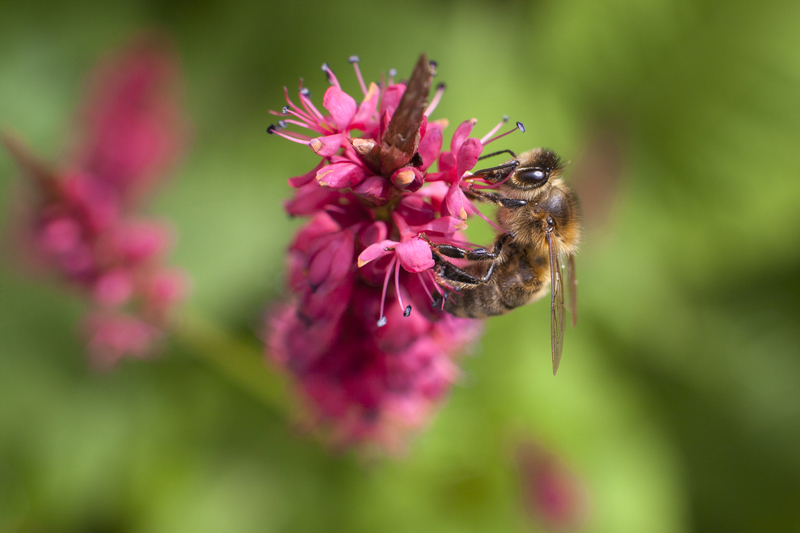Vertical Gardening Solutions for Small Spaces
Posted on 18/06/2025
With urban spaces shrinking and the love for greenery remaining ever strong, the concept of vertical gardening has risen as a creative and rewarding method for maximizing plant growth in limited areas. Whether you live in an apartment, have a tiny balcony, or want to transform a compact courtyard, vertical gardening offers a world of possibilities for every plant enthusiast.
What is Vertical Gardening?
Vertical gardening, sometimes referred to as living walls or green walls, is a technique of growing plants upward rather than outward. It makes use of vertical space on walls, fences, or specially designed structures, allowing you to cultivate a lush garden where traditional horizontally-spread gardens may not be feasible. Vertical garden solutions for small spaces are perfect for those with limited acreage but plenty of creativity.
Benefits of Vertical Gardening in Small Spaces
- Space Saving: Grows upward, utilizing unused wall or fence space.
- Improved Air Quality: Plants help filter pollutants and improve the surrounding environment.
- Aesthetic Appeal: Creates vibrant green backdrops that can transform bland spaces.
- Thermal Insulation: Living walls help regulate indoor temperature and reduce energy consumption.
- Enhanced Privacy: Vertical walls can serve as natural screens or dividers.
- Reduced Pest Problems: Raising plants off the ground can lower common pest risks.
- Accessible Gardening: Great for individuals with mobility issues, as plants are easier to tend when grown vertically.

Innovative Vertical Gardening Solutions for Small Spaces
Small-space gardeners can implement a range of creative approaches to enjoy a rich harvest or ornamental display. Here are some of the most popular and effective vertical gardening ideas for small areas:
1. Wall-Mounted Planters
Wall planters are one of the easiest ways to create a vertical garden. These planters come in a variety of materials, including terracotta, metal, recycled plastic, or felt fabric pockets. Attach them directly to exterior or interior walls to introduce natural beauty in a minimal footprint.
- Tip: Choose sturdy fasteners appropriate for your wall type, and ensure adequate drainage to prevent water damage.
- Best For: Herbs, succulents, small ferns, and flowers.
2. Trellis and Climbing Plants
A trellis affixed to a wall, fence, or balcony rail provides a supportive structure for vining or climbing plants. Vertical gardens that use trellises can turn pure green screens into edible and ornamental barriers.
- Popular Trellis Plants: Ivy, jasmine, climbing roses, clematis, peas, and beans.
- Design Tip: Consider painting or staining your trellis for a decorative accent.
3. Hanging Gardens
Maximize ceiling or overhead space with hanging planters. Macrame holders, recycled soda bottles, or modular pots suspended by hooks help you add layers and depth to balconies and patios.
- Great for: Trailing plants like pothos, string of pearls, spider plants, and fuchsias.
- Pro Tip: Hang at different levels for a tiered vertical effect.
4. Pallet and Upcycled Gardens
Repurposing old pallets, bookshelves, or shoe organizers can bring stylish sustainability to your vertical gardening. Pallets, with their built-in slots, make excellent ready-made planters for herbs, strawberries, or small annuals.
- Eco-Friendly: Reduces waste and requires minimal investment.
- Project Idea: Sand and paint the pallet to match your decor. Line with landscape fabric to hold soil in place.
5. Living Green Walls
For a more sophisticated look, consider installing a modular living wall system. These are customizable panels or grids where plants are grown in soil or hydroponic media. Some systems come with built-in irrigation, making them low maintenance once established.
- Best for Indoor Spaces: Offices, bathrooms, or living rooms where you want a true 'wall of life.'
- Professional Installation: Large or elaborate systems may require expert setup.
6. Window Boxes and Rail Planters
If your small space includes window sills, porch railings, or balcony edges, use them! Window boxes and railing planters are fantastic for growing compact vegetables, herbs, or colorful annuals.
- Top Picks: Basil, oregano, chives, lettuce, pansies, and petunias.
- Safety Note: Secure boxes well to prevent accidents in windy conditions.
Best Plants for Vertical Gardening in Small Spaces
Selecting the right plants is crucial for a thriving vertical garden. Focus on species that naturally have a compact growth habit or can adapt well to containers and limited soil depth. Here's a list of ideal choices:
- Herbs: Basil, thyme, mint, parsley, oregano, chives
- Leafy Greens: Lettuce, spinach, arugula, kale
- Fruiting Plants: Strawberries, cherry tomatoes, dwarf peppers
- Flowers: Petunias, pansies, violas, begonias, nasturtiums
- Succulents: Sedum, echeveria, burro's tail, hens-and-chicks
- Vines and Climbers: Ivy, philodendron, pothos, peas, beans
DIY Vertical Garden Ideas for Compact Spaces
Simple Vertical Herb Garden
Step-by-step:
- Find a wooden pallet and sand down rough edges.
- Attach landscape fabric to the back and bottom of each pallet row.
- Fill rows with potting mix and insert favorite herbs.
- Stand the pallet upright and secure to a sturdy wall or railing.
- Water thoroughly and enjoy fresh cuttings at your fingertips!
Shoe Organizer Planter
Hang a canvas shoe organizer on a fence or wall. Fill each pocket with a small amount of potting soil and plant greens, herbs, or compact flowers. The result is an inexpensive and visually engaging vertical garden solution for apartments and balconies.
Rain Gutter Gardens
- How to Apply: Cut rain gutters into manageable lengths, cap the ends, drill drainage holes, and mount them in rows on a sunny wall.
- Great for shallow-rooted veggies or flowers.
Vertical Indoor Gardening for Apartment Dwellers
Not everyone has access to outdoor space, but vertical indoor gardening makes it possible to garden year-round. South-facing walls and windows are perfect for wall-mounted or hanging planter solutions. Try growing:
- Herbs and Microgreens: Quick to harvest and don't need deep soil.
- Air Plants: Thrive without soil and are great for mounted displays.
- Foliage Plants: Pothos, snake plant, philodendron, ferns.
Tip: Use grow lights if your apartment doesn't get ample sunlight.
Essential Tips for Successful Vertical Gardening in Small Spaces
- Ensure your wall or mounting frame can support the weight of wet soil and mature plants.
- Prioritize drainage to avoid waterlogging and root rot.
- Use high-quality, well-draining potting mix.
- Regularly check for pests and diseases, especially in dense plantings.
- Watering may need to be more frequent as containers dry out faster than ground beds.
- Fertilize occasionally to provide essential nutrients (especially in edible gardens).
Common Mistakes to Avoid
- Overcrowding: Give plants enough space for airflow and growth.
- Poor Light: Choose plant species that match your light conditions.
- Ignoring Weight: Wet soil and mature plants are heavy--ensure structures are secure.
- Improper Watering: Don't let water pool or dry out containers completely.
Sustainable and Eco-Friendly Vertical Gardening
Sustainability is increasingly important in the modern home and urban gardening scene. Vertical gardens for small spaces can help reduce your ecological footprint by:
- Improving insulation and reducing heating or cooling costs
- Reusing and upcycling everyday items (like pallets, bottles, tin cans)
- Attracting pollinators and beneficial insects
- Filtering pollutants and improving indoor and outdoor air quality
- Growing your own food to minimize grocery travel and packaging waste
Eco Tip: Collect rainwater for irrigation and use organic fertilizers for a truly green approach!

Frequently Asked Questions about Vertical Gardening in Small Spaces
- Can I build a vertical garden if I rent my apartment?
Absolutely! Choose non-permanent, freestanding structures, hanging planters, or rail boxes. Always check with your landlord before screwing into walls. - Are vertical gardens hard to maintain?
They can be surprisingly easy with smart plant choices, proper watering routines, and sturdy support structures. - What's the best way to water a vertical garden?
Drip irrigation systems work best for larger vertical gardens. For smaller DIY or indoor solutions, water gently with a can or bottle, ensuring excess drains away. - Can I grow vegetables in a vertical garden?
Yes! Compact varieties of tomatoes, peppers, lettuce, and even some root veggies can thrive in a vertical setup.
Conclusion: Greener Living Through Vertical Gardening
Vertical gardening is the ultimate solution for small-space gardeners, delivering lush greenery, vibrant blooms, and fresh produce even when square footage is limited. By using vertical garden solutions for small spaces, anyone with a blank wall, balcony, or indoor nook can transform their living environment into a green sanctuary.
Embrace vertical gardening ideas for apartments, balconies, and tiny backyards to maximize your plant potential and reap the benefits of beauty, health, and sustainability.
Whether you choose a simple shoe organizer, a living green wall, or a sophisticated modular system, let your creativity flourish and watch your vertical garden thrive!

